Grow Bags have done gardening in urban areas simple and convenient. Any area of your home or apartment that receives even a small quantity of sunshine can now be used for gardening. Yet it’s not always easy to tell what size grow bag a specific vegetable needs. We’re going to assist you at this time. Because of the variety of plant sizes, it’s important to use appropriately sized grow bags. Below we learn to grow bag size chart for vegetables in India, grow bag size guide, what size grow bag for vegetables in India, and how to grow vegetables in grow bags.
Grow bag size chart in India
What size grow bag do I need for vegetables?
You can grow one large plant like pepper in a 3-gallon cloth pot or a few smaller plants like lettuce or peas. Tomatoes, peppers, flowers, herbs, potatoes, tiny fruiting trees, and stevia do exceptionally well in 5-gallon grow bags. Grow bags with a 10-gallon capacity are large enough to hold an entire garden. Planting potatoes or tomatoes between a bed of basil is a breeze. Other popular options include spinach and salad greens. With proper off-season storage, grow bags can outlast any plastic pot.
Remember to add that reusable cloth bags are better for Mother Nature, too. The 100-gallon grow bags are another option if you enjoy the thought of a larger planting area, like a raised bed. It’s a great way to maximize the yield from a single grow bag. Fabric bags can only hold so much soil as opposed to the infinite volume of the ground itself. As a result, fertilization will be necessary for heavy feeder plants. Natural fertilizers such as bone meal, worm castings, and compost teas are highly beneficial to plants.
Eggshells and Epsom salts are good sources of minerals. Grow bags are the way to go if you want a garden but need more space for an actual one. You can put them on a porch or in a sunny spot next to a window. Fabric pots are a fantastic choice if you reside in a poor soil environment. It’s a clever idea to dispose of the soil used in your grow bag in the future garden spot. If this is continued for a few years, the soil will be in much better condition.
What is the standard size for grow bag?
Spinach, Amaranthus, Coriander, Methi, Tomato, Brinjal, Chilies, Carrots, Beetroot, and any other leafy vegetable or fruit can be grown in standard Grow of 24 cm x 24 cm x 40 cm. In Medium size grow bags can accommodate up to 15kg of Potting Mix. Lemon trees, curry leaves, and several gourds (bottle gourd, bitter gourd, ridge gourd, and snake gourd) can be cultivated in large grow bags (61 cm x 35 cm x 18 cm).
There’s room for up to 35 kilograms of potting soil. A wide variety of fruit trees, including pomegranates, guavas, chikos, oranges, papayas, and more, can be grown in extra-large bags measuring 85 by 45 by 35 centimeters. There’s enough room for up to 80 kilograms of Potting Mix.
What size grow bags for tomatoes?
Choosing the finest tomato to plant in fabric aeration pots is essential. While every variety of tomato, from beefsteak to salad to paste to cherry, can be grown in fabric aeration containers, it’s essential to select a variety well-suited to the size of your container. For each patio-type determinate tomato plant, you’ll need a container with five to ten gallons of water. Tomatoes of the larger, indeterminate kind need larger containers for optimal growth. In contrast, the small cherry variety can be grown in a fabric bag as compact as two or three gallons.
In case you missed it: How to Grow Tomatoes from Seeds: Starting from Scratch, A Beginners Guide to Indoors, Outdoors, and in Pots
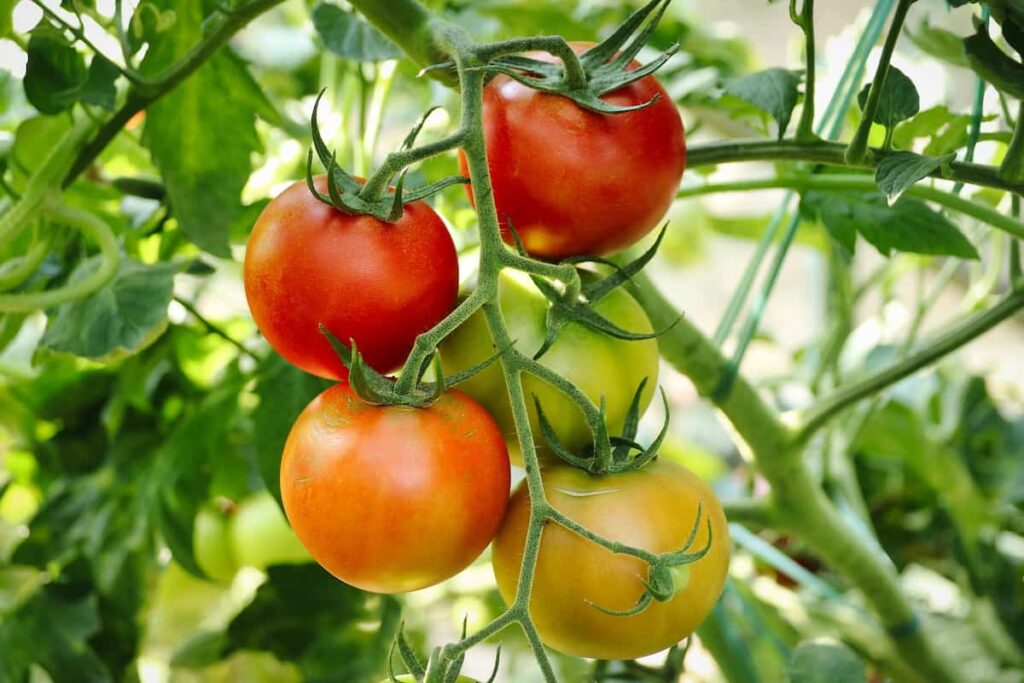
What size grow bag for carrots?
Carrots are tall and lean, so you can grow many of them in a bit of space. Carrots of various sizes can be grown in a 10-gallon grow bag, roughly 16 inches across. Carrots planted in containers have fewer problems with pests like slugs and larger animals like rabbits and deer. Kids can also benefit from this do-it-yourself project. Children can easily plant and cultivate carrots, and they will enjoy tending to the pot and eating the finished product.
Perhaps they will even try their hand at eating the carrots they planted. You can plant carrots in just about any container, but make sure the pots are deep enough to support the carrots’ roots. You’ll find ample information on the many different kinds of carrots below; remember that their root lengths can vary anywhere from 2 inches to a foot or more.
What size grow bags for cucumbers?
It is vital to use the appropriate size grow bag while cultivating cucumbers. One-gallon growth bags can be used successfully when starting cucumbers from seeds. Sow two or three seeds, but limit each 1-gallon potted plant to one individual. The cucumber plant needs to be moved to a larger grow bag when it reaches the three-week mark. A good cucumber plant needs at least a 5-gallon to-grow bag.
If you use a grow bag large enough (at least 5 gallons per plant), you can cultivate multiple cucumber plants in a single space. Two cucumber plants can be nurtured in a 10-gallon pot. A 5-gallon grow bag is an excellent place to begin when transplanting mature plants purchased from a nursery. While a large cucumber plant could require a larger container, most will thrive in a 5-gallon grow bag. The 200-gallon version of the grow bag is one of the larger options. Such a grow bag might serve as a miniature garden, producing an abundance of cucumbers.
In case you missed it: Growing Cucumber from Seed to Harvest: A Detailed Guide for Beginners
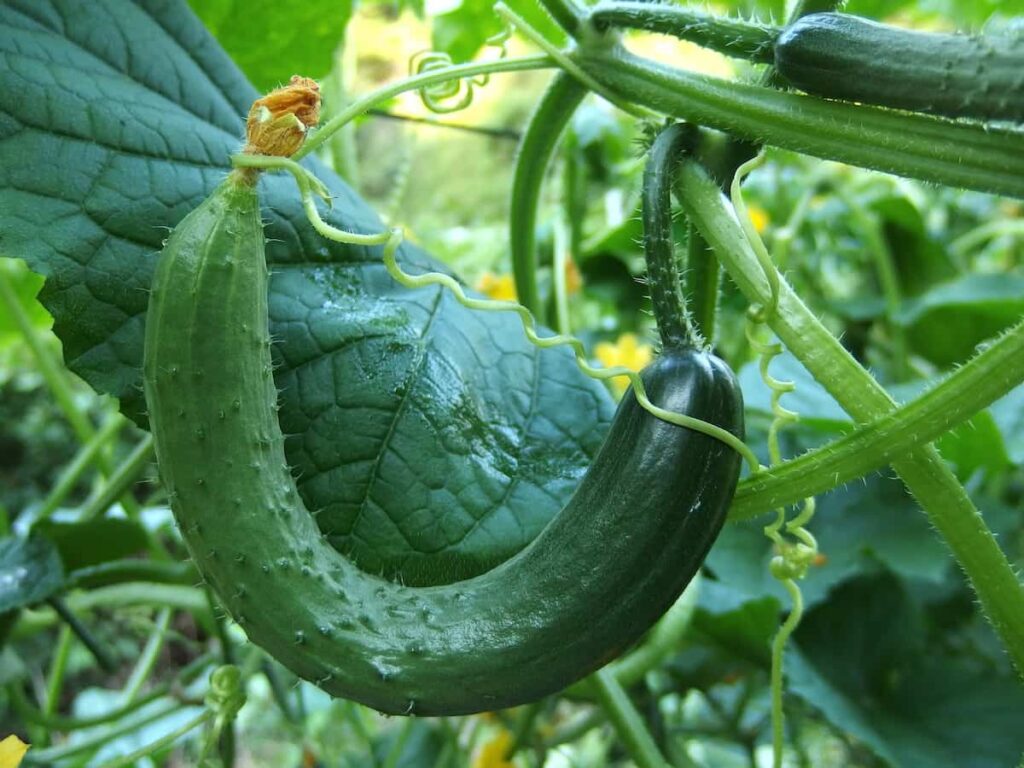
What size grow bag for onions?
Soil depth in onion pots should be at least 10 inches. In terms of circumference, a diameter of any size is OK, but remember that each onion needs about three inches of space to grow to maturity. There are a variety of containers suitable for growing onions (6–8 bulbs), including a 5-gallon bucket, a large planter box, or a plastic tub. Maintaining the container off the ground and with drainage holes is essential.
What size grows bag for eggplants?
To thrive, eggplant plants need a minimum of 12-14 inches of room. Remember that eggplants have huge root systems, so choosing a larger pot will always be advantageous. A five-gallon grow bag is ideal for eggplants, but anything larger than two gallons will do. Look for shorter, more compact types, such as the hansel or the patio baby, for growing eggplants in containers.
You should anticipate getting at least a dozen vegetables per plant from these plants, with sizes ranging from three to five inches. You should also ensure that the selected container has adequate drainage options. It’s fine to use an unglazed pot for growing eggplants, but keep in mind that it will dry up more quickly than a glazed pot.
In case you missed it: How to Grow Eggplant/Brinjal from Seed to Harvest: A Complete Guide for Beginners
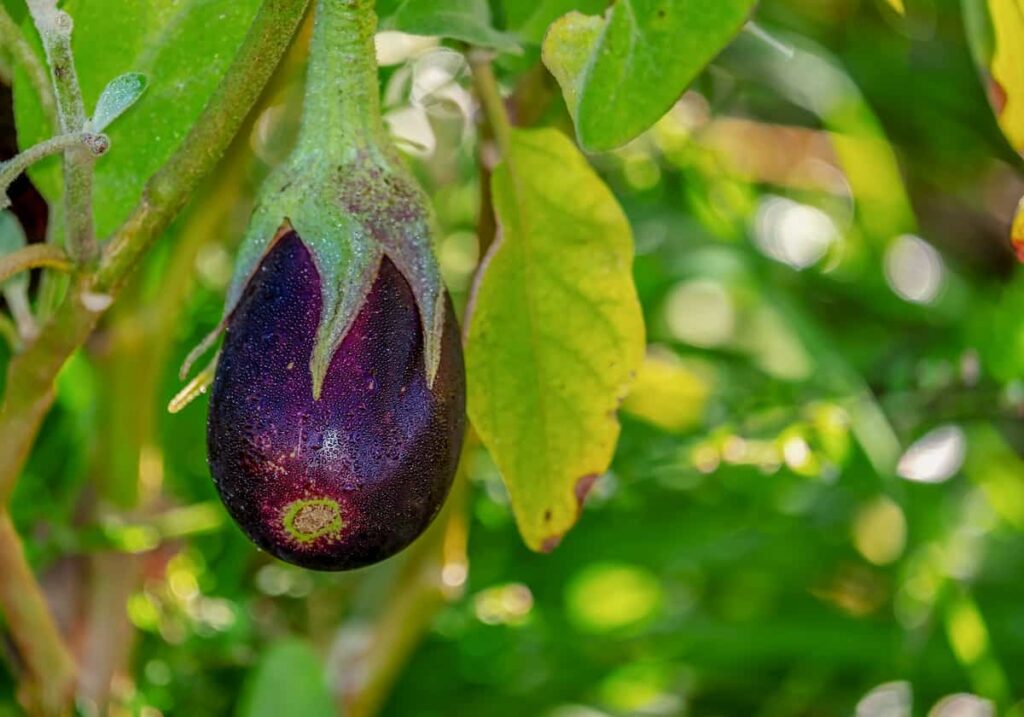
What size grow bag for potatoes?
The number of chitted potatoes needed relies on the capacity of the chosen bag. Gallonage is the standard unit of measurement. In general, about 2.5 gallons are needed per potato plant. Consequently, four potatoes can be grown in a 10-gallon bag, whereas only two plants will fit in a 5-gallon bag. Common potato-growing containers are 10 gallons in capacity. It’s best to think about how much space you’ll need for your potato grow bag before purchasing.
Drainage is crucial in bags. If you want to use plastic bags for recycling, you must punch plenty of ventilation holes at the base. Lightproofing is also crucial. Thus dark colors (like black) are recommended. You can double them up or use many layers of newspaper to block out the light if you hold the bags up to the light. Instead, it would help if you used a potato bag designed for that purpose. Some potato bag varieties even have a peek-a-boo window so you can see them develop.
Are grow bags better than plastic pots?
More water is wasted on evaporation and seepage because grow bags drain better than regular pots. Plant soil in grows bags can dry up more quickly than in pots, especially in dry or hot environments. Drip irrigation, such as a hose fitted with drip emitters, can be used to solve this issue by watering several grow bags at once. Alternatively, if you will be away from your plants for a lengthy time, you can utilize a bottle watering method. This keeps the soil moist at all times.
Are grow bags safe for vegetables?
Growing crops for human consumption raises the question of whether or not grow bags themselves are hazardous. Food can be safely stored in a grow bag, and polypropylene is one of the least poisonous plastics available. This is because polypropylene is widely used in BPA-free food containers and grow bags. BPA is a chemical used in plastic production that harms individuals and the environment.
The traditionally produced wool felt flammable, but polypropylene can be used instead. The materials used to construct a grow bag determine the extent to which it can be reused. Grow bags made from polypropylene cloth can be reused for multiple growing seasons if cared for properly and thoroughly cleaned after each season. Biodegradable grow bags will begin to break down while the plant is still inside them, making them less durable than polypropylene grow bags.
A polypropylene growth bag should endure for at least five growth seasons if properly cared for. Even polypropylene grow bags eventually wear out because of the elements, just like biodegradable grow bags. Plants can be grown in either a grow bag or a plastic container, often produced from polypropylene. The main distinction is that planters are often fashioned from hard plastic rather than flimsy fabric. Nonetheless, there are a variety of different plastics that can be used to make containers.
When properly maintained, plastic containers can last forever. Their lack of handles, however, makes them bulkier and more cumbersome to transport than grow bags of the same size. Water can easily drain out of plastic containers thanks to the holes at the bottom. However, you may need to regularly water the plants using grow bags instead of pots because they store less water.
What size grow bags for peppers?
These days, many people who want to grow their vegetables in small spaces choose fabric grow bags; for your pepper plants, we suggest the 5-gallon size. In addition, pepper plants in containers shouldn’t be overwatered or grown in potting soil that doesn’t drain well, as this can lead to rapid death for the plant. It is essential to monitor the soil moisture level of container-grown peppers, allowing them to dry out somewhat between waterings but never letting them become bone dry. If the leaves on your pepper plants are turning yellow, it’s a sign that you’re overwatering them.
In case you missed it: Growing Peppers in Pots from Seed, and Cuttings

What size grows bag for green beans?
Prepare high-quality potting soil by filling a grow bag to a depth of 10–12 inches. You can fit one or two bush kinds per bag, or three or four pole bean plants, in each of these 10-gallon grow bags. They can be placed next to a fence or deck for climbing plants, or a big cage or trellis can be built around or on top of them.
Beans need a consistent water supply throughout the season, as they are thirsty plants. Aim for an inch of weekly watering, but ensure the containers have drainage so the water can escape. Keep the soil moist without making it soggy. The roots of a bean plant should be watered rather than foliage.
In case you missed it: Growing Green Beans from Seed to Harvest: How to Start from Scratch, A Detailed Guide for Beginners
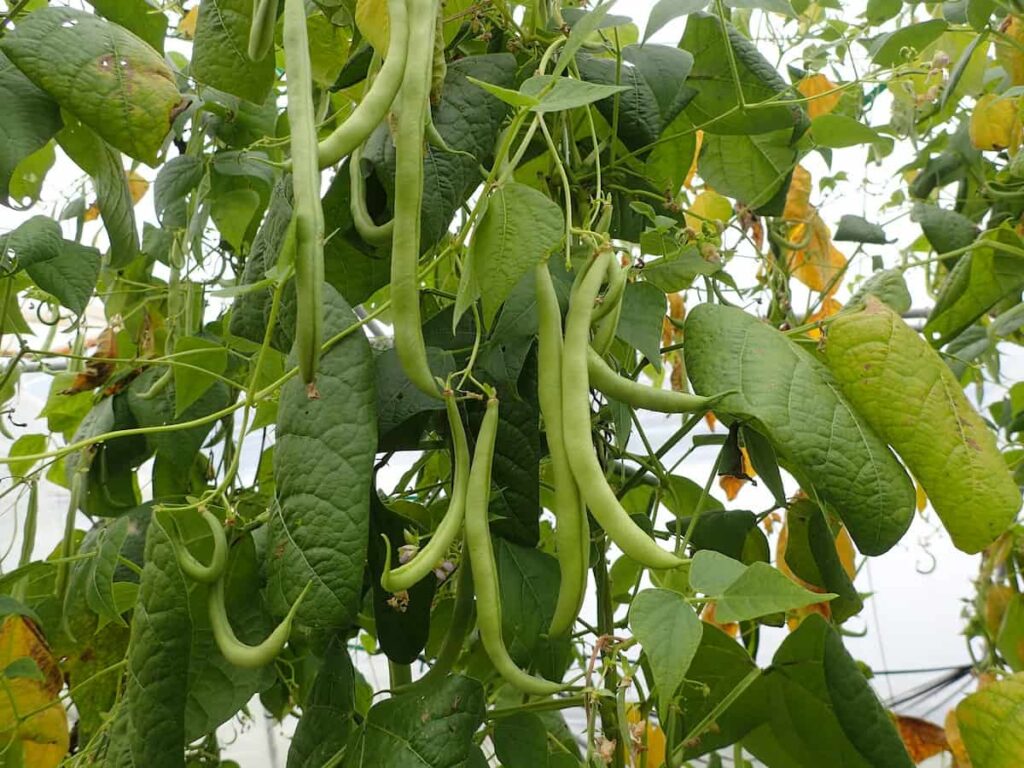
What size grow bag do I need for cherry tomatoes?
Determinate tomato plants need 10-gallon grow bags, whereas indeterminate tomato plants need 20-gallon bags, and smaller tomato varieties like cherry tomatoes need 5-7 gallon bags. Tomatoes need a grow bag at least 15 inches (38cm) wide and 12 inches deep (30 cm). Grow bags are permeable material so that soil can get enough air, and excess heat can escape. They are easy to carry along and compact.
With these two handles, you can easily relocate your plants to provide optimal conditions, such as lighting. As soon as the growing season is over, grow bags can be easily packed away for future use. Tomatoes need regular watering to grow, which can cause drainage issues in pots and other containers. Since the grow bag is permeable to the air, the surplus water evaporates. Tomatoes grown in grow bags have healthier root systems because the bags provide excellent air circulation, which helps to reduce root-bounding.
What size grow bag for sweet potatoes?
The capacity of the grow bag doesn’t matter as much as the fact that it’s at least 20 gallons and ideally 100 gallons. Grow a lot of sweet potato slips in a large grow bag filled with high-quality soil to a depth of 12-18 inches if you want a substantial yield. Sizes of 50 and 100 gallons are most commonly selected. A grow bag of 100 gallons is equivalent to a big raised bed. A 100-gallon grow bag would need about 7.88 cubic feet of soil, or.29 cubic yards if filled to a depth of 12 inches (30.48 cm). Look at the precise measurements of the bags in question when comparing their sizes.
How long do grow bags last?
Indoor or outside, large or small, grow bags are ideal for cultivating plants. Grow bags come in various sizes, so you can start a plant off in one and then transfer it to a bigger one as it develops. A properly maintained grow bag can survive for many more seasons than the 7–8 recommended by the manufacturer. Pressed together rather than woven, the fabric of grow bags is what gives them their long lifespan. The bags can easily be sliced without compromising their structural integrity, allowing for development at the top and sides.
What size grow bag for pumpkins?
Growing pumpkins require a sizable plot of land since the vines can reach staggering heights. That’s why it’s essential to consider where you’ll put your pumpkins when learning to grow them. Full light for at least six hours a day, good soil with good drainage, and lots of water are essential. Growing pumpkins in a container allow for greater control over these variables, and many gardeners have found this to be the ideal method.
Growing plants successfully in a 20- to 30-gallon soft-sided container allows you to position your plant in the best possible sun while still providing the soil volume and water capacity your plants require. How about a larger container or a raised bed with movable sides? Plant a few pumpkin seeds and watch your harvest increase!
In case you missed it: Soil Preparation for Pumpkin Plants: Best Soil Mix, pH, and Compost
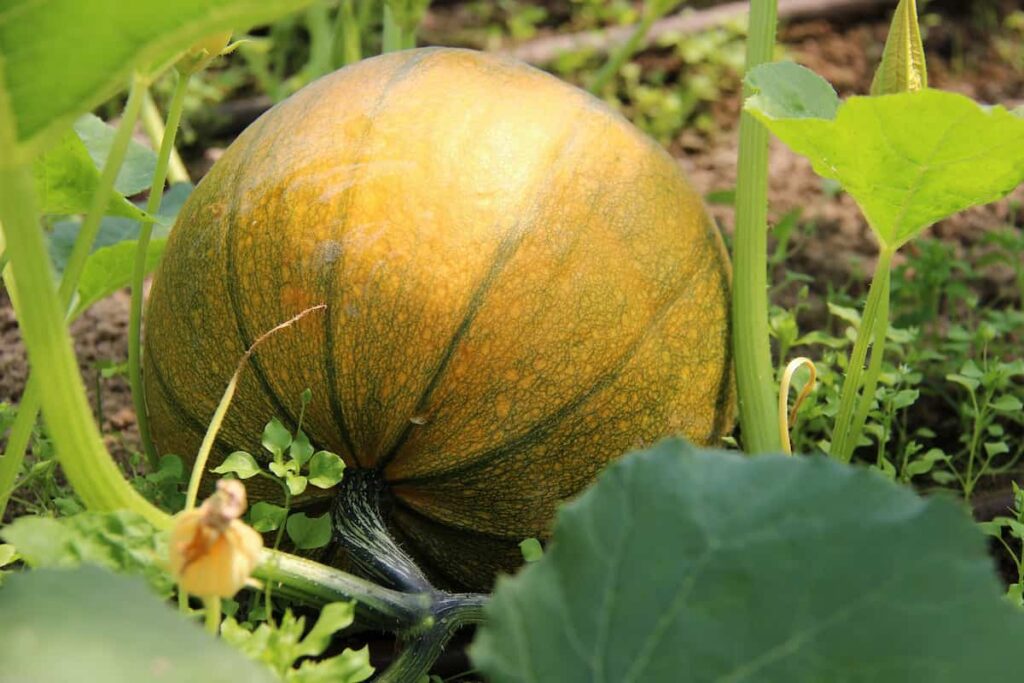
Grow bag size chart/guide for vegetables, herbs, and fruits in India
| Vegetables, herbs, and fruits | Grow bag size (in inches) (W*H) |
| Tomato, ladies’ finger, brinjal, green chilies, capsicum, corn | 12*12, 15*12, 15*15, 18*18 |
| Coriander, methi, spinach, lettuce, swiss chard, mustard greens, chives, celery, kale, leeks, sorrel, amaranth | 24*9, 9*9, 18*6, 18*9 |
| Bottle gourd, bitter gourd, cucumbers, melons, pumpkins, squash, zucchini, snake gourd, watermelons | 15*15, 18*18, 24*24, 18*18, 24*18 |
| Cauliflower, broccoli, collards, kohlrabi, brussels sprouts, Cabbage | 15*12, 12*12, 60*15, |
| Potato, radish, carrot, beetroot, onions, ginger, asparagus, Turnips | 15*12, 15*15, 9*9, 12*12, |
| Papaya, banana, pomegranate, lemon, Jamun, amla, guava | 24*24, 18*18, 24*18, 24*36, 36*36 |
Conclusion
Grow bags are ideal for growing a wide variety of vegetables. They should thrive if you pick the correct kind of setting and a suitable-sized grow bag. Never plant too many seeds in one area if you want to harvest large crops.
- Broccoli Seed Germination and Selection
- Asparagus Seed Germination and Variety Selection
- Seasonal Flower Gardening: Best Practices for Spring, Summer, Fall, and Winter
- How to Grow Hibiscus from Flower
- Plantation Ideas for Home Decoration: A Beginners Guide
- Flower Garden Designs and Layouts for Beginners
- Planting and Spacing Techniques in Papaya: A Beginner’s Guide
- Growing Gold: Essential Techniques for Planting Pineapples
- How to Make Kalanchoe Plant Bushy: Home Remedies and Solutions
- 11 Reasons Why Your Gardenia is Not Blooming: Home Remedies and Solutions
- Eco Elegance: The Guide to Designing a Drought-Tolerant Landscape
- Gardening on a Slope: Strategies for Hillside Landscaping
- Nourish and Flourish: Top Organic Mulches for Thriving House Plants
- Everything You Want to Know about Indian Mogra Flower: Discover Uses and Growing
- Green Thumb Success: Expert Tips for Cultivating Greenhouse Pumpkins All Year Round
- Maximize Growth & Flavor: The Ultimate Guide to Companion Planting in Herb Gardens
- How to Control Rhododendron Problems Naturally: Home Remedies and Organic Ways to Fix Them
- Natural Magic: The Remarkable Benefits of Cinnamon for Plants
- Best Steps to Revive Dying Tulip with Natural and Organic Treatment
- 10 Reasons Why Your Angel Trumpet is Not Blooming: Remedies and Treatment
- How to Fix Periwinkle Leaf and Flower-Related Problems: Natural Remedies and Solutions
- How to Fix Zinnias Leaf and Flower Problems: Discover Natural and Home Remedies
- Organic Steps to Induce Lemon Tree Flowers: A Comprehensive Guide
- Bloom Booster: Crafting the Perfect Homemade Bougainvillea Fertilizer
- Optimizing Growth: A Guide to Applying NPK Fertilizer for Potted Plants
- 10 Best Homemade Fertilizers for Rubber Plant: DIY Recipes and Application Method
- How to Boost Female Pumpkin Flowers: Effective Steps for More Flowers and High Yields
- Transform Your Indoor Garden: Top Benefits of Pink Salt for Houseplants
- 10 Best Homemade Fertilizers for Peacock Plants (Calathea): Easy DIY Guide
- Unlock Blooms: 9 Reasons Why Your Potted Chrysanthemum is Not Blooming
- 8 Reasons Why Your Potted Hibiscus is Not Blooming: Fix it with Simple Solutions
- Unlock Blooms: 9 Key Reasons Your Potted Frangipani Won’t Flower
- 10 Reasons Why Is My Ice Plant Not Blooming: Remedies and Treatment
- 10 Reasons Why My Potted Hydrangea Not Blooming: Treatment and Remedies
- 10 Reasons Why is My Wisteria Not Blooming: Remedies and Treatment
- 10 Reasons Why is My Goldfish Plant Not Blooming: Remedies and Treatment